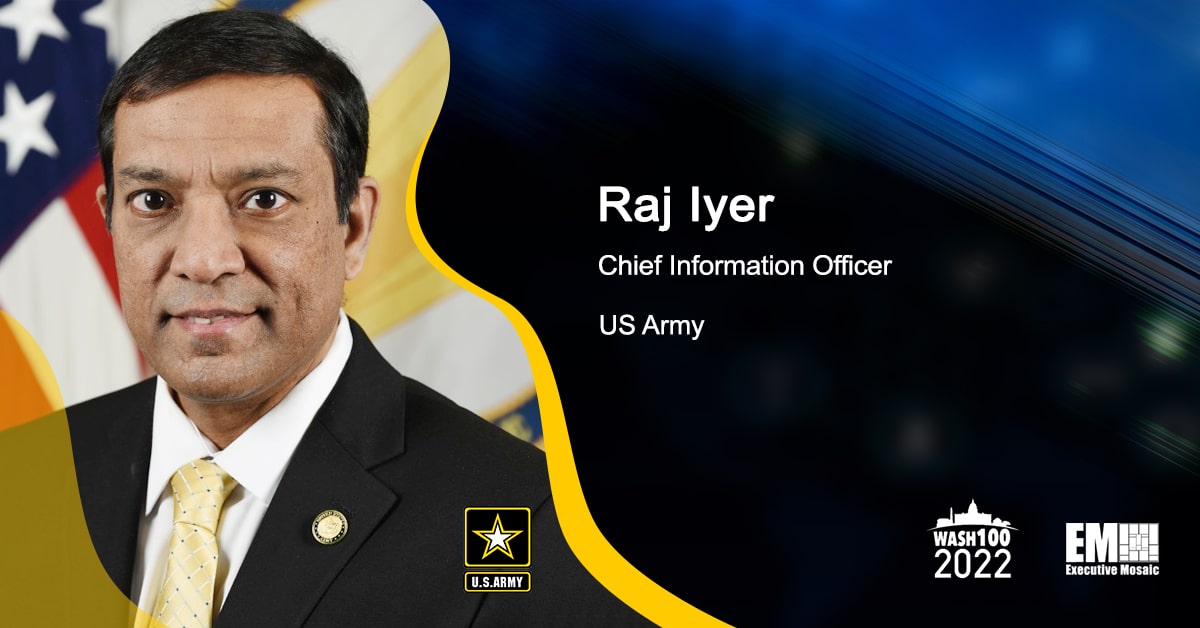The U.S. Army plans to launch a competition for a potential $1 billion multiple-award, indefinite-delivery/indefinite-quantity contract as part of a push to speed up the migration of existing systems to the cloud, Federal News Network reported Wednesday.
Raj Iyer, the Army’s chief information officer and a 2022 Wash100 Award winner, said the service hopes to award the Enterprise Application Modernization and Migration contract vehicle by the end of June 2023 and intends to operate the IDIQ contract through the Enterprise Cloud Management Agency to streamline the contracting process and inform commands of technical options to facilitate the cloud migration process.
“[We’ll be] holding their hands. It’s no longer just telling the commands, you’ve got to go figure it out,” Iyer said.
“We’ll help them migrate, all the way from architecting the cloud solution, working through migrating the data, the contract vehicle, and so on,” he added.
The Army also unveiled a plan outlining the service’s strategic approach to operationalizing its enterprise cloud environment in support of warfighters and enabling multidomain operations.
The Army Cloud Plan 2022 has seven strategic objectives: expanding cloud; implementing zero trust architecture; enabling secure, rapid software development; accelerating data-driven decisions; enhancing cloud operations; developing the cloud workforce; and providing cost transparency and accountability.
Iyer said the service has created the foundation for the enterprisewide adoption of the cloud at secret and unclassified levels through cArmy.
“The new ACP focuses on scaling and operationalizing cARMY to meet the needs of the warfighter through our partnerships with the 82d Airborne Division, XVIII Airborne Corps, I Corps, Multidomain Task Force, and others across the Army in support of experimental and exercises as they evolve to the Multi Domain Force of 2030,” he noted.
The military branch on Tuesday released its Army Data Plan detailing its approach to improving data management, data governance and analytics as it works to become a data-centric organization.















